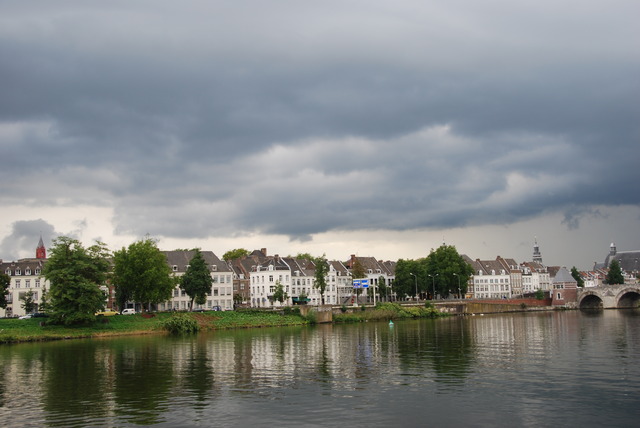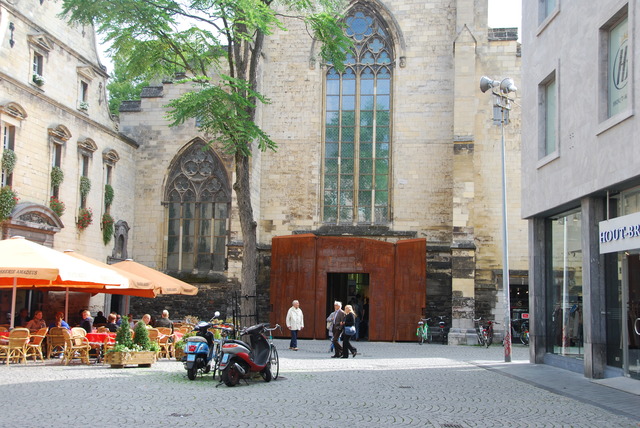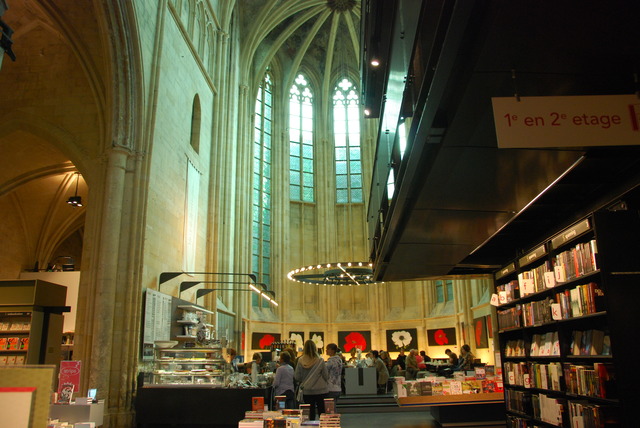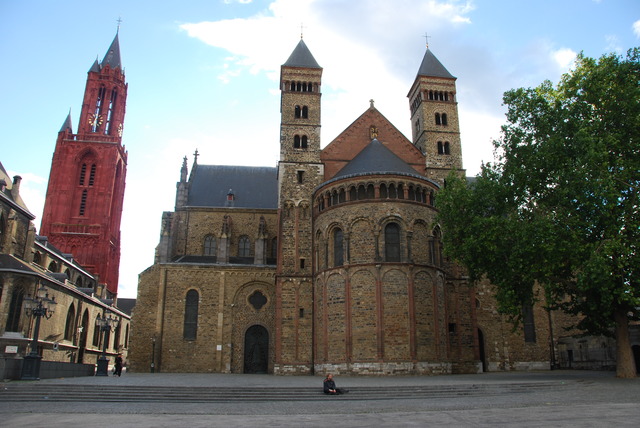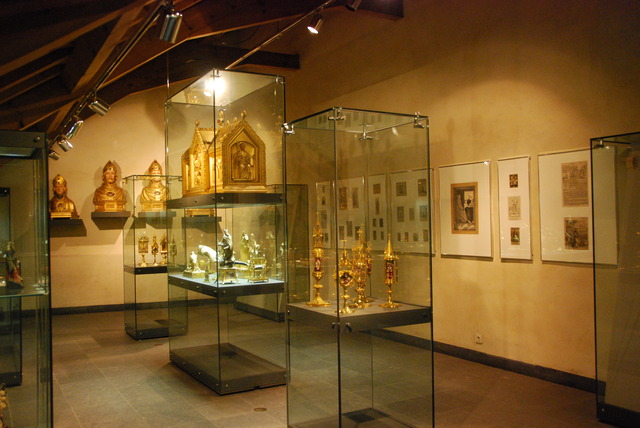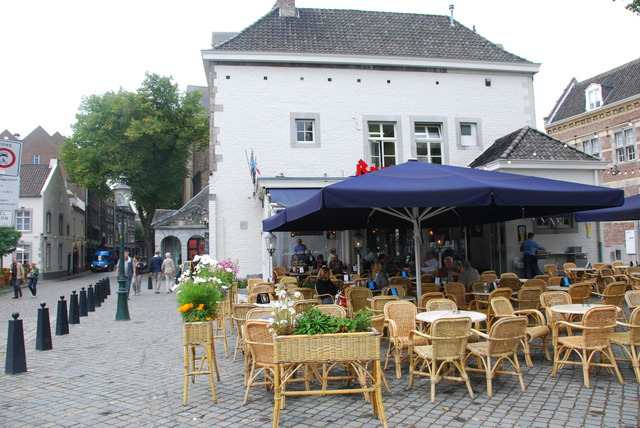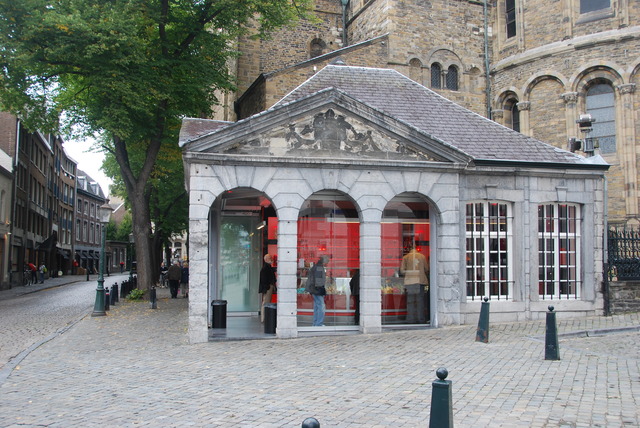September 9th – Thursday: Cloudy & Rainy: 12 – 17 degrees C
Maastricht, Netherlands was another interesting Dutch city to learn about and explore. The Michelin Guide said that Maastricht is the “bustling cosmopolitan provincial capital of Limburg.” The original settlement on the Maas River continued to grow from Roman times.
It has been a college town since 1976 and the student population “gives the historic town a vibrant feel and exuberant character”. Today, Maastricht continues its old tradition as a “busy Medieval center on an important trading route” with many modern shops and stores in the central part of the town.
We walked around Maastricht to explore the sights and learn about the city. The buildings are an interesting blend of modern and historic. The old streets are narrow and very clean. There are bicycles everywhere! Like most Dutch villages, all the people, young and old, ride bicycles or motor-bikes anywhere and everywhere.
As we explored, we found “the most beautiful book store in the world”. Jeff had read about it in the guide but we didn’t know where it was. So we were surprised to find it by chance!
The book store was in a lovely old church, with the high Romanesque arched ceiling and stained glass windows. There was no sign outside or identifying label that it was a book store. Two levels of book shelves had been built inside the middle of the church. There was a cafe with tables and chairs in the head of the church where the alter must have been. The entire effect was quite lovely. All it needed were comfortable chairs to sit on and read.
The most famous sight is St. Servaasbasiliek (Saint Servatius Basilica) located on the Vrijhof, the main market square of Maastricht. The interesting information about St. Servatius is that historians believe he was born in Armenia. He was a bishop in the Roman Catholic church and he transferred his bishopric to Maastricht in 382 and is credited with bringing Christianity to the region. The first church was built on top of his tomb after he died in 384.
St. Servatius’ remains are in the crypt which is under the nave of the Basilica. The pillars of the 6th century sanctuary which was built in his honor are still part of the chapel. Construction of the original church began in about 1000 AD and the existing Basilica was expanded to its current size in the 12th through 15th centuries.
We found the entry doors by accident and paid an admission fee of about 3 euros each. The first rooms we saw were the “Treasury” which was located in the collegiate chapel from the 12th century.
This was an impressive collection of liturgical objects made of gold, silver, and ivory displayed in glass cases. Then we walked around the lovely 15th century cloister and into the church. As soon as we opened the large heavy door, we were met by the strong scent of incense, just like an Armenian church! Ahhh, I thought, the spirit of the Armenian St. Servatius is still here….. We had visited many other churches and none of them had the same incense as this in the air of the sanctuary. It was the same incense that is used in Armenian churches.
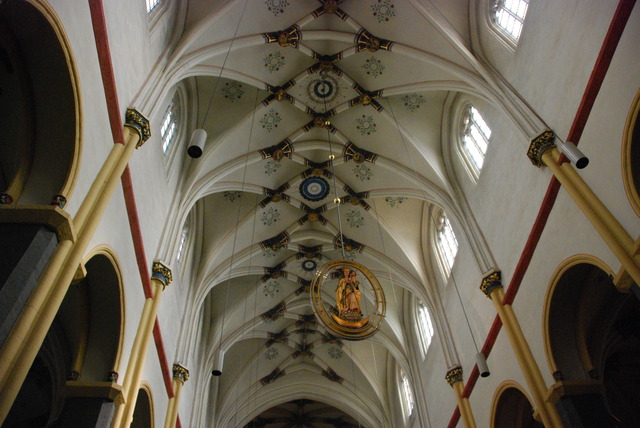 Ceiling of St. Servaas Basilica
Ceiling of St. Servaas Basilica
We listened to a young woman practice playing the lovely organ and we left quietly. Then we had a delicious fresh lunch in a modern cafeteria on the street level near all the bright shops. We were tired and walked back to the hotel to rest for a few hours.
About 6:00 PM we went out again to walk around and have a nice last evening in Maastricht. There was some blue sky when we started out, but then the large black clouds moved in and it started to rain. We entered John Mullen’s Irish Pub and had a couple of Strong Bows and waited out the rain.
Last night the streets of Maastricht were empty, but tonight there were crowds of people everywhere. We finally realized that on Thursday nights, the stores are open until 9:00 PM. We explored some more and looked at the buildings with construction dates of 1723 or 1709, etcetera, written on them.
Then we walked by the River Maas and found a restaurant for dinner: La Bonne Femme. We haven’t had a bad meal in Holland, or all of Benelux, and this was also delicious! There was a bright red gelateria nearby and we stopped for gelato. We leisurely walked back to the hotel eating our gelato.
One of the houses along the river had a marble plaque above the front door which read in Latin: Ubi Bene Ibi Sum. Literally it means: Where it’s good, here we are. I thought of several interpretations. I like the idea of ‘where ever we are, it’s good’. A good end to a good day……
